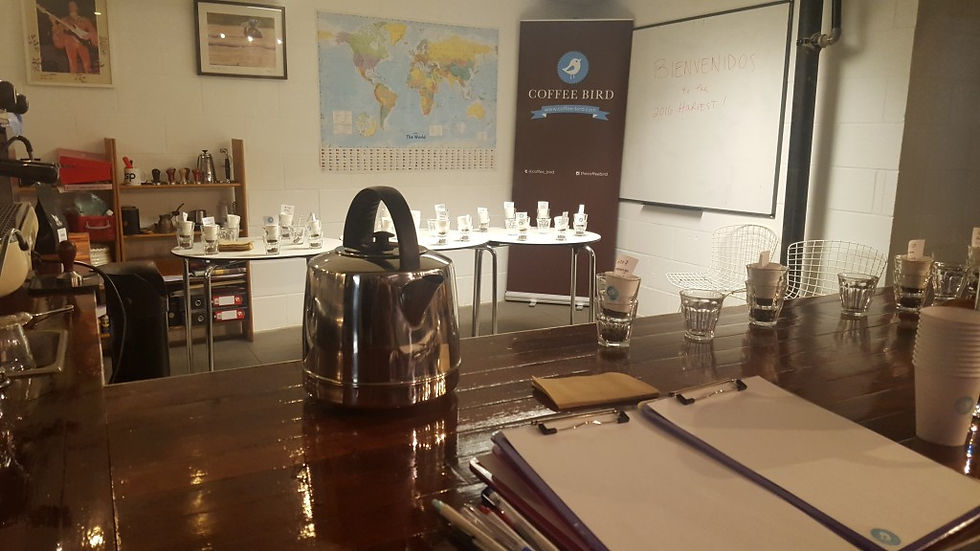Dr Aaron Davis and his lecture on Wild Species
- Nov 19, 2013
- 3 min read
Whilst I enjoyed all the Nordic Roaster Forum lectures, Aaron Davis' was the highlight for me. I regretted missing his lecture at Symposium in Boston and was so pleased to have another opportunity listen to him this year.
He is a Botanist and scientist at Kew Gardens. His discussion was about Coffee or the Coffea genus to be exact. The lecture discussed the wild species of Coffee and started out with Arabica. All speciality coffee comes from a varietal of Arabica. The DNA of Arabica was explained.
Imagine this: we Specialty Coffee people obsess over 1 of 124 species that exist in the world! Robusta is the other species that is consumed, and beyond these two there are 122 species out there that the world hasn't really explored.

Of the 124 species out there, Aaron’s discovered 21 of them! He mentioned that some of them wouldn't really provide an alternative to Arabica as they were undrinkable.
It is extremely difficult to source these wild species, but we still managed to have an interesting cupping. There were 11 cups on the table. I took extremely brief notes and the purpose was not to grade these via a SCAA cupping form, but just to jot a few notes down. I've included the details with my very brief notes just to give you a vague of idea of the sensory experience:
Arabusta - Fragrance of washed coffee with a possible defect yet has a sweet aroma. Inconsistent cups. One cup tastes like a salty Arabica and the other cup tastes like a Robusta.
Batian - Sweet cherry almond
SL 28/SL34 - tainted cup. Fragrance is similar to hairspray yet the aroma is sweet, and it tastes juicy with apricot notes.
Ruiro II, Kenya - Fragrance reminds me of that of a Brazilian Hair treatment (chemicals to straighten your hair!)
Caturra - Citrus acidity, juicy, thin body, slightly unpleasant aftertaste
Castillo, Colombia -Fruity pebbles cereal, reminds me of the Geisha from Panamanian farmer I received this year
Bourbon- Pointu/Laurina, Brazil - Juicy, leather
Congusta - Ashy, rough, flat, reminds me of horchata powder, Robusta like
Robusta, Rwanda - reminds me of one of the disgusting protein powders I've had!
S 274 Robusta - Chalky fragrance, definitely a Robusta
Sln5 from India - in the fragrance I picked up the similar sweetness that you get from a pure Bourbon
We cupped these blind which is why my notes seem a bit obvious at times.
It was not only interesting to learn about the other species, development with tastes, but also to understand why the plagues that have impacted the industry have been so drastic. Since no one owns a monopoly on coffee and it is grown across the world, there hasn’t been as much invested in research as say other crops such as maize or corn.
Aaron mentioned that the current issues with leaf rusts have actually been prevented in other crops. Other genus such as tomatoes have eliminated susceptibility of leaf rust completely. The World Coffee Research is the only entity that is initiating sizeable research and it is perhaps 30 years behind other crops.
On the topic of plagues, Aaron shared the details of how Sri Lanka (Ceylon) transitioned from a coffee to tea producing country. Leaf rust wiped out the entire coffee production in the country. It was only because the country suffered a complete devastation that farmers turned to tea.
I was so moved by his lecture that I’m thinking about making a fan club for coffee scientists.
Who is with me?




Comments